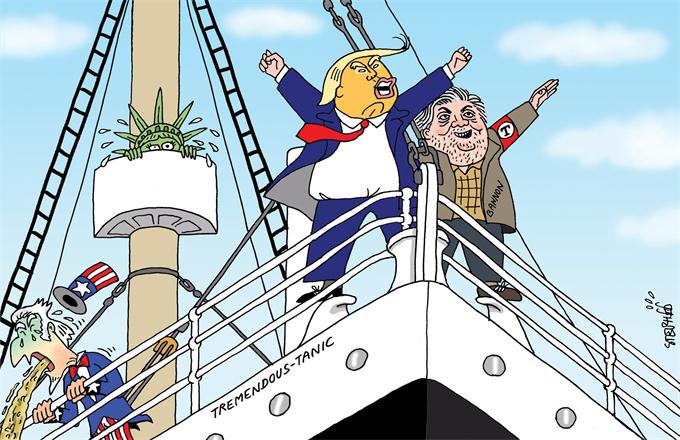Think tank urges China to fill the position vacated by US at the TPP table
 |
|
The seminar held by The Center for China and Globalization (CCG) in Beijing to discuss China may seize the chance to fill the position vacated by the United States at the TPP table.[Photo provided to chinadaily.com.cn] |
Joining the Trans-Pacific Partnership Agreement could advance China’s economic diplomacy standing and have advantages for constructing China’s layout of propelling Free Trade Agreement of the Asia Pacific (FTAAP) and advancing relations with other countries, according to a leading policy studies focused think tank.
The Center for China and Globalization (CCG) suggests China could seize the chance to fill the position vacated by the United States at the TPP table.
The report by the independent, non-profit think tank based in Beijing, considered both domestic and external circumstances, and the short and long term situation. It argues that supporters of the TPP like Australia and Japan, which have already put in much effort and aim to foster regional economic and trade development, were very worried about the US withdrawal. In turn, they are actively encouraging China to fill the void.
As Chile's foreign minister Heraldo Muñoz said, the proposed grouping of the TPP member states and China and Korea, has already generated interest from many countries.
With the support of all these countries, the timing would enable China to keep alive the essence of the TPP - an effective mechanism of economic governance and enhance Asia-Pacific regional economic cooperation.
Researchers also pointed out that joining the TPP would allow China to deploy its own economic diplomacy, which may be vital when dealing with the challenges posed by current circumstances.
“Entering a new phase and responsible for balancing security and development, facing challenges at home and abroad, fostering China’s diplomacy requires establishing a more favorable external environment," CCG president Wang Huiyao said. "Putting more effort on economic diplomacy has proven to be a valid approach to accomplish this goal, and joining TPP might be an ingenious step.”
Another long term scenario the research team looks at is China’s future deployment in FTAAP. The report explains that if China promotes more cooperation between member states of the TPP and the Regional Comprehensive Economic Partnership (RECP), it could use that as a leverage to better involve the US, facilitate FTAAP’s further development, benefit the countries in this region and achieve inclusive growth.
The common interest between China and the US in the Asia Pacific region remains an unavoidable issue that even US president Trump had to admit they still need a “fairer” trade arrangement for the region, even though he abandoned the TPP.
“Though it might be a bumpy road, I believe China and the US will finally fit together to reach win-win cooperation, maintaining large trade flow and close cultural exchanges,” CCG vice president Wang Xin said.
He imagined the US getting involved in the development FTAAP in “a more evolving and comprehensive partnership that unites countries together to cope with challenges brought by world economy.”
Concerning Trump’s priority on infrastructure construction, he also suggested inviting the US to join the Asian Infrastructure Investment Bank and contribute to Belt and Road Initiatives “which would definitely contribute a lot for trade and investment globalization.”



















